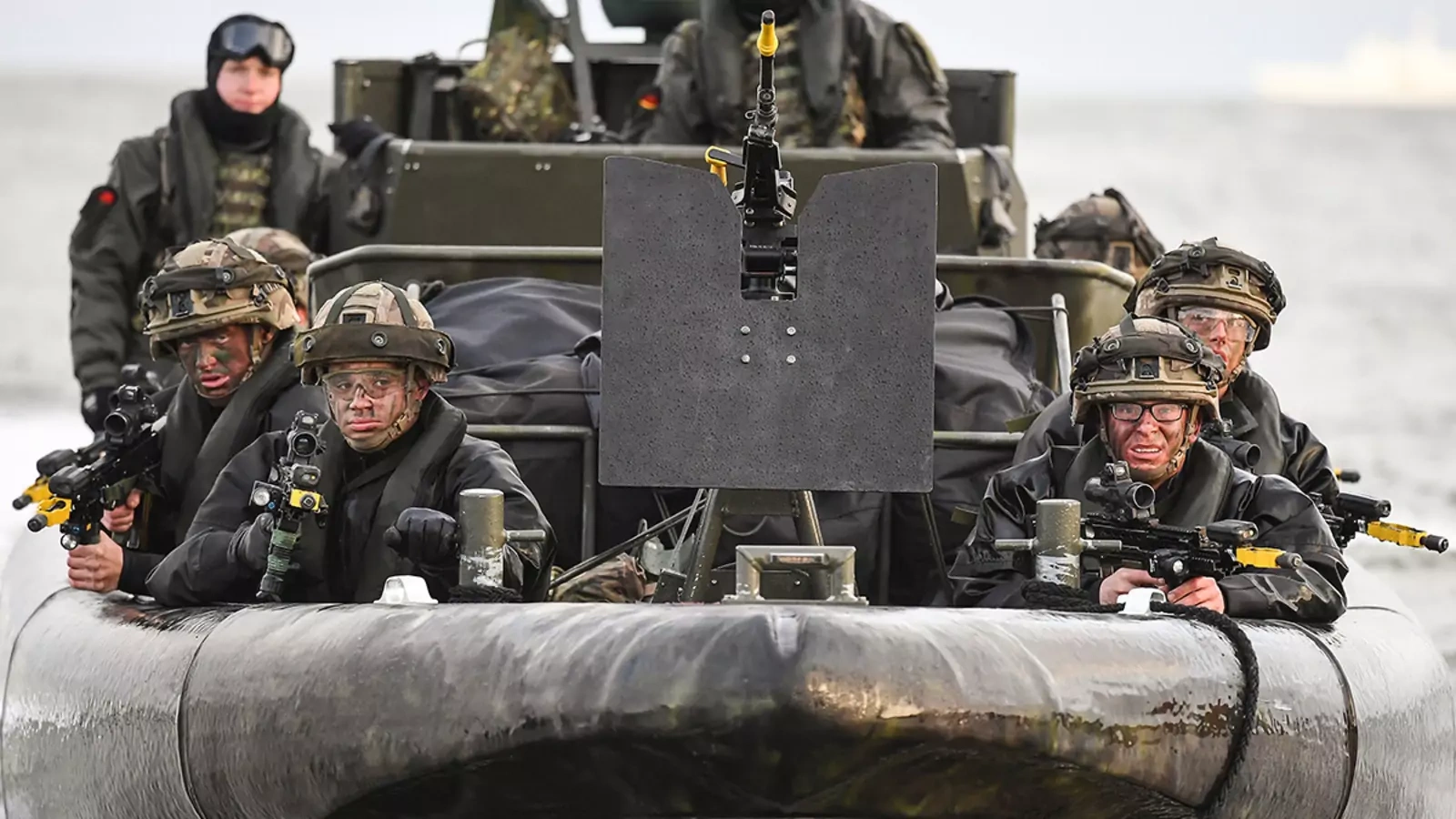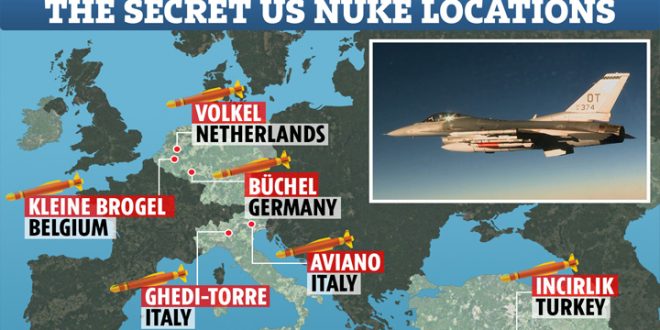
Tom Sauer / Europearn Leadership Network
(January 21, 2021) — The entry into force of the Treaty on the Prohibition of Nuclear Weapons (TPNW) on 22 January 2021 yields strong and mixed emotions. Advocates expect an acceleration of the climb to the summit of Mountain Global Zero. Opponents repeat that the nuclear-armed states will never sign the Treaty.
If the nuclear-armed states are not willing to ban nuclear weapons, though, the odds are that others will not believe their promises to eliminate nuclear weapons, as required by the Nuclear Non-proliferation Treaty (NPT). That does not bode well for the NPT, the “cornerstone” of the nuclear non-proliferation and disarmament regime.
The TPNW is a manifestation of the frustration on behalf of the non-nuclear weapon states about the very slow reduction rate of nuclear disarmament by the nuclear weapons states and their allies under the NPT, especially over the last two decades. If the signal of the TPNW is not picked up by the nuclear weapons states and their allies, these frustrations will come back like a boomerang.
This time, these frustrations will not be canalized by another treaty. Done that, been there. A possible next step is to withdraw from the NPT. Iran has already threatened to do so. If that threat is carried out, the odds are that Saudi Arabia and possibly Turkey and Egypt will follow. At the UN General Assembly in September 2019, the Turkish President Erdogan made clear that he did not like the discriminatory nature of the NPT, for which he got a lot of applause.
Egypt has already walked out of one of the NPT Prepcoms. Other non-nuclear weapon states also ask themselves why they have to fulfill their NPT obligations, while the nuclear weapon states do not, at least in their perception. Threatening to leave the NPT is the leverage the non-nuclear weapon states have.
If they really believe that the nuclear-armed states and their allies are not willing to give up their nuclear weapons, they have not much to lose by withdrawing from the NPT. The discriminatory NPT regime would be left behind, and one can start building a more equal regime from scratch.
Is that desirable? Certainly not. It may lead to more proliferation. Luckily, this scenario can still be prevented. The ball is now in the camp of the nine nuclear-armed states — the five formal nuclear weapon states and Israel, India, Pakistan and North Korea — and in the next phase even more their allies. Do they remain dismissive of the TPNW and do they continue modernizing their nuclear weapons arsenals for the coming 80 years for trillions of dollars, or do they understand the signal?
It is in the first place up to the allied non-nuclear weapon states to make a decision. Do they keep hiding behind the nuclear-armed states or do they start acting as non-nuclear weapon states under the NPT? Worse, the allies do not only hide behind the nuclear-armed states, they help the nuclear-armed states to hide behind them and they are probably not even aware of it.

The US, the UK and France continue to legitimize their nuclear weapon arsenals and doctrines not only by pointing to the outside threats, but also to the demands of the allies. That is already a long-term practice going back long before the invasion of the Crimea by Russia.
Without the European allies, the US advocates of the expensive modernization program of the B-61 bomb — costing more than US$10 billion for 400 bombs — may not have won the debate. Without Japan and the European allies, the Obama administration in all likelihood would already have announced a no first use or a sole purpose doctrine. The allies are at least as much responsible for the current status-quo with respect to NATO’s nuclear weapons policy than the three NATO nuclear-armed states.
Given that public opinion in the allied states is highly in favor of nuclear disarmament and the TPNW, and given the fragile nature of the NPT, it is time to switch gears. In my own country, Belgium, there is a clear majority in favor of the withdrawal of the US tactical nuclear weapons, and 77% favor signing the TPNW. As a result, the allies should delegitimize nuclear weapons in the upcoming NATO Strategic Concept.
Under the TPNW stationing nuclear weapons on other states’ territory is regarded as illegal. Each additional day that the American tactical nuclear weapons remain on European territory, NATO’s legitimacy in countries like Belgium, the Netherlands and Germany crumbles further. But also Poland and the Baltic States (and Putin) are aware that NATO is never going to use nuclear weapons to “protect” these states. They should be reassured with a credible (non-nuclear) deterrent. That is a win-win.
The withdrawal of the tactical nuclear weapons in turn would also make it easier to announce a NATO no first use policy. Alternatively, tactical nuclear weapons (and probably also missile defense) should be included in follow-up New START negotiations between the US and Russia.

Ideally, the allies should also sign the TPNW as soon as possible, as recommended by 56 Prime Ministers, Ministers of Foreign Affairs or Defense, and two former NATO Secretary-Generals, all from allied states. Here are some steps the allies could take in the interim phase:
- change the rhetoric and tone vis-à-vis the TPNW from being dismissive to at least a neutral or positive tone, like the Belgian government declaration of 30 September 2020, and a resolution by the Spanish parliamentary Foreign Affairs Committee in December;
- Establish a “Group of Friends of the TPNW” in the Alliance;
- Be present as an observer at the first meeting of the States Parties in January 2022 to engage with the TPNW member states without having to commit themselves to anything yet;
- Contribute financially to the assistance of victims of nuclear weapon tests (as demanded by the TPNW);
- Vote in favor or abstain on TPNW resolutions in the UN General Assembly in the Autumn of 2021.
With the entry into force of the TPNW, the international community stands at a crossroads with respect to the future of nuclear weapons. The non-allied non-nuclear weapon states have done their part. It is now up to the Allies to put pressure on the nuclear-armed states, not limited to the US, the UK and France.
Otherwise, a world without nuclear weapons will indeed become a utopian goal and nuclear weapons will further spread. Under that scenario, the only hope that remains is that nuclear weapons will never be used. Just like we hoped that a global pandemic à la Covid would never arise.
The opinions articulated above represent the views of the authors, and do not necessarily reflect the position of the European Leadership Network (ELN) or any of the ELN’s members. The ELN’s aim is to encourage debates that will help develop Europe’s capacity to address pressing foreign, defence, and security challenges.
Sources:
Tom Sauer and Claire Nardon, ‘The softening rethoric by nuclear-armed states and NATO allies on the Treaty on the Prohibition of Nuclear Weapons’, in: War on the Rocks, 7 December 2020.
Tom Sauer, ‘Power and Nuclear Weapons: The Case of the European Union’, in: Journal for Peace and Nuclear Disarmament, vol.3, no.1, 2020, pp.41-59.
Tom Sauer and Ramesh Thakur, ‘How many intensive care beds will a nuclear weapon explosion require ?’, in: The Bulletin of the Atomic Scientists, 28 April 2020.
Tom Sauer, Jorg Kustermans, Barbara Segaert (eds), Non-Nuclear Peace. Beyond the Nuclear Ban Treaty, Palgrave/Macmillan, January 2020, 195 p.
Joelien Pretorius and Tom Sauer, ‘Is it Time to Ditch the NPT ?’in: The Bulletin of the Atomic Scientists, 6 September 2019.
Tom Sauer, ‘The Role of Informal international Organizations in Resolving the Iranian Nuclear Crisis’, in: Journal of Common Market Studies, vol.57 (5), September 2019, p.939-955.
Tom Sauer, winner of Rotary International Alumni Global Service Award 2019.
Tom Sauer and Mathias Reveraert, ‘The potential stigmatizingeffect of the Treaty on the Prohibition of Nuclear Weapons’, in: The Nonproliferation Review, vol.25, issue 5-6, June-July 2018
Posted in accordance with Title 17, Section 107, US Code, for noncommercial, educational purposes.